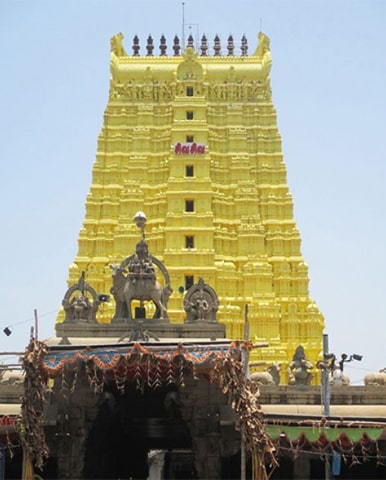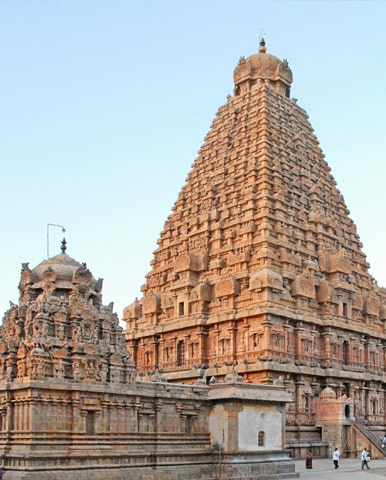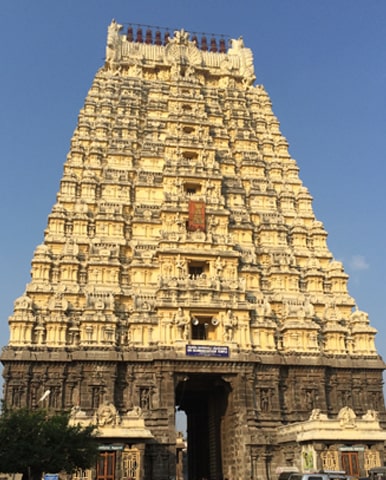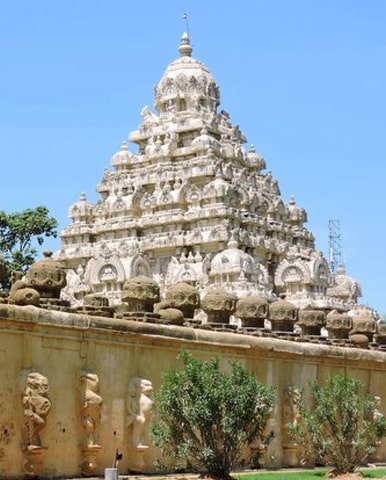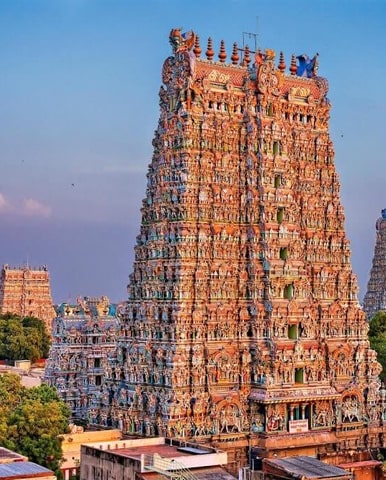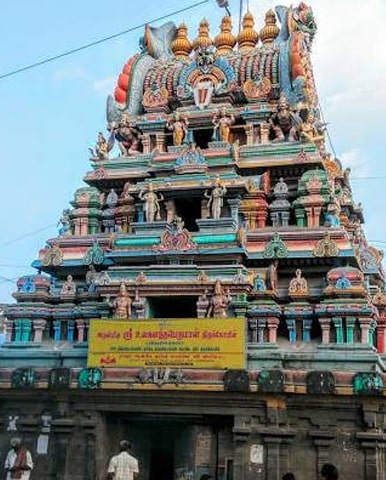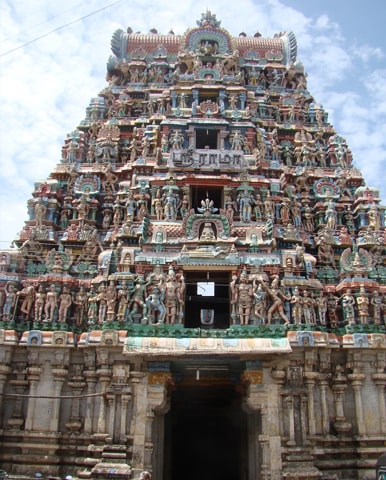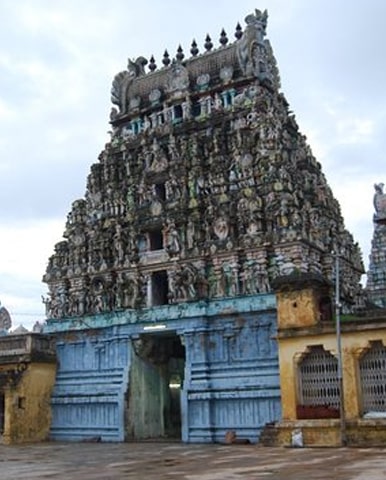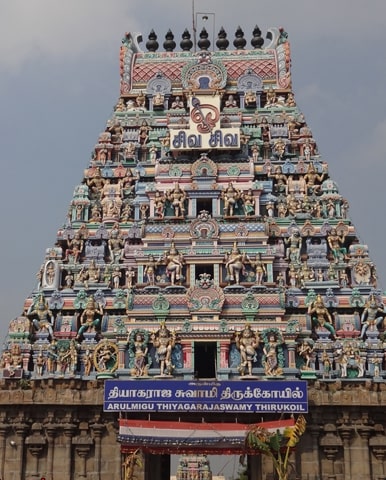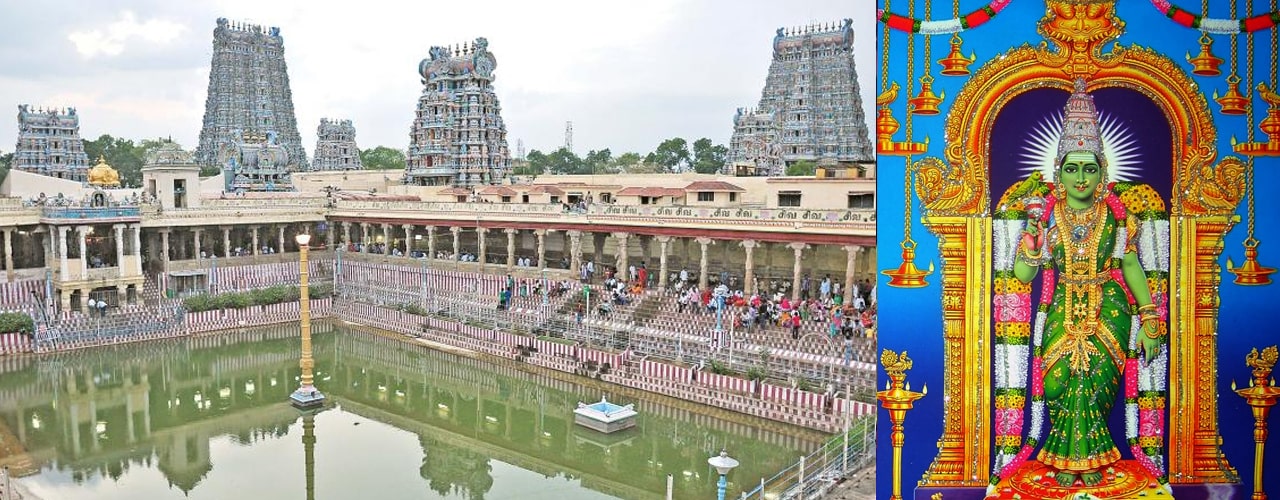
Meenakshi Amman Temple, Madurai
Meenakshi Temple (additionally known as Meenakshi Amman Temple or Meenakshi Sundareshwarar Temple also spelled as Meenaatchi Temple)is a historical Hindu temple positioned on the southern financial institution of the Vaigai River inside the temple town of Madurai, Tamil Nadu, India. It’s far devoted to Thirukamakottam udaya aaludaiya nachiyar (திருக்காமக்கோட்டம் உடைய ஆளுடைய நாச்சியார்) Meenakshi, a shape of Parvati, and her consort, Sundareshwar, a shape of Shiva.The temple is at the middle of the ancient temple metropolis of Madurai referred to inside the Tamil Sangam literature, with the goddess temple mentioned in 6th century CE texts.This temple is one of the Paadal Petra Sthalam. The Paadal Petra sthalam are 275 temples of lord Shiva which are respected within the verses of Tamil Saiva Nayanars of 6th-9th century CE.
Madurai Meenakshi Sundareswarar temple was constructed by means of King Kulasekara Pandya (1190-1216 CE). He built the principle portions of the 3-storeyed gopura at the entrance of Sundareswarar Shrine and the principal part of the Goddess Meenakshi Shrine are a number of the earliest surviving parts of the temple. The traditional texts call him a poet-saint king, additionally credit him with a poem referred to as Ambikai Malai, as well as shrines (koil) every for Natarajar and Surya near the main temple, Ayyanar in the east, Vinayagar inside the south, Kariamalperumal in the west and Kali inside the north. He also built a Mahamandapam. Kulasekara Pandya was additionally a poet and he composed a poem on Meenakshi named Ambikai Malai.Maravarman Sundara Pandyan I constructed a gopura in 1231, then referred to as Avanivendaraman, later rebuilt, elevated and named as Sundara Pandya Thirukkopuram.Chitra gopuram (W), additionally referred to as Muttalakkum Vayil, become built via Maravarman Sundara Pandyan II (1238-1251). This gopuram is named after the frescoes and reliefs that depict secular and non secular issues of Hindu subculture. Maravarman Sundara Pandyan II additionally introduced a pillared corridor to the Sundareswara shrine and the Sundara Pandyan Mandapam .
It become rebuilt after the 14th-century damage, its granite structure become renovated by using Kumara Krishnappar after 1595 . Even though the temple has ancient roots, most of the present campus structure was rebuilt after the 14th century CE, in addition repaired, renovated and multiplied within the seventeenth century through Tirumala Nayaka.Inside the early 14th century, the armies of Delhi Sultanate led by Muslim Commander Malik Kafur plundered the temple, looted it of its valuables and destroyed the Madurai temple town in conjunction with many different temple cities of South India. The current temple is the result of rebuilding efforts began through the Vijayanagara Empire rulers who rebuilt the center and reopened the temple.Within the sixteenth century, the temple complicated become similarly increased and fortified by way of the Nayak ruler Vishwanatha Nayakar and later others. The restored complex now homes 14 gopurams (gateway towers), starting from 45–50m in top, with the southern gopura tallest at fifty one.9 metres (a hundred and seventy ft). The complicated has numerous sculpted pillared halls together with Ayirakkal (a thousand-pillared corridor), Kilikoondu-mandapam, Golu-mandapam and Pudu-mandapam. Its shrines are committed to Hindu deities and Shaivism pupils, with the vimanas above the garbhagrihas (sanctums) of Meenakshi and Sundaresvara gilded with gold.
The temple is a chief pilgrimage destination in the Shaivism subculture, committed to Meenakshi Devi and Shiva. However, the temple includes Vishnu in lots of narratives, sculptures and rituals as he’s taken into consideration to be Meenakshi’s brother.This has made this temple and Madurai because the “southern Mathura”, one protected in Vaishnava texts.The Meenakshi temple also consists of Lakshmi, flute playing Krishna, Rukmini, Brahma, Saraswati, different Vedic and Puranic deities, as well as artwork showing narratives from predominant Hindu texts. The huge temple complex is the most prominent landmark in Madurai and draws tens of hundreds traffic a day.The temple draws over a million pilgrims and traffic all through the yearly 10-day Meenakshi Tirukalyanam pageant, celebrated with a good deal festivities and a ratha (chariot) procession for the duration of the Tamil month of Chittirai (overlaps with April–may additionally in Georgian calendar, Chaitra in North India).The Temple has been adjudged great ‘Swachh Iconic location’ in India as on October 1, 2017 underneath Swachh Bharat Abhiyan.
The town of Madurai is historic and one noted in Sangam era texts.These are dated to be from the 1st to 4th century CE.A few early Tamil texts call Madurai as Koodal, and those portray it as a capital and a temple town where every avenue radiated from the temple. Goddess Meenakshi is defined as the divine ruler, who along side Shiva were the primary deities that the southern Tamil kingdoms such as the Pandya dynasty respected.The early texts mean that a temple existed in Madurai by the mid 6th century.In medieval literature and inscriptions, it is occasionally called Kadambavanam (lit. “forest of Kadamba”) or Velliambalam (lit. “silver corridor” in which Shiva danced). It changed into described to be the sangam of students, or an area where pupils meet. It’s miles mentioned within the Tamil text Tiruvilayadalpuranam and the Sanskrit text Halasya Mahatmya.It’s miles one of the shrines of the 275 Paadal Petra Sthalams.
Share This Post:
How to reach
- By Road: Madurai is situated on National Highways NH-7, NH-45B, and NH-49. Almost all of them are presentlybeing upgraded to multi-lane ways as part of National highway development program. Travel fromChennai and Bangalore will take approximately 8-10 hours.
- By Train: Trains are the major mode of entry into the city. The railway station is centrally located and manyfacilities are accessible from there. Madurai is well connected by trains to many parts of Indialike Chennai, Bangalore, Mumbai (Bombay), and Delhi.A train journey from Chennai takes 8 to 10 hours and is the preferred railhead. Train tickets can bebooked from Indian Railways’ reservation centers or online from IRCTC.
- By Air: Madurai has an International / Domestic airport with fairly good facilities. The flights connect mainlyto Chennai (Madras), but there are few direct flights to other major Indian cities.The airport is about 15 km from the city center off National Highway 47. It is best to hire a taxi from theairport from the counter in the arrival lounge or arrange for someone to meet you at the airport. Forthose who prefer to use public transport, you should take bus number 10A, which runs from the airportto the Periyar bus stand.
Related Temples
How to reach
- Nearest airport is Madurai
- Nearest railway station is Madurai
- Nearest bus stations are Madurai and Chennai

